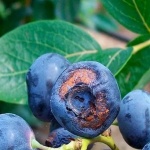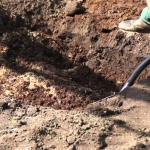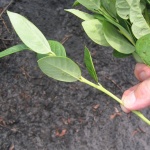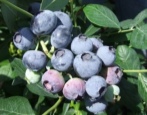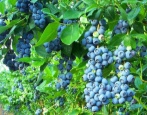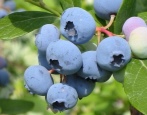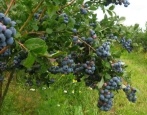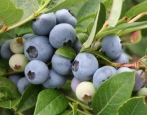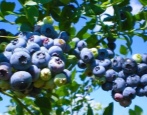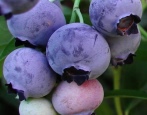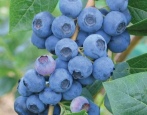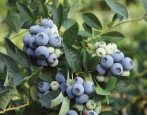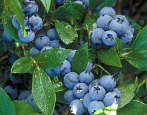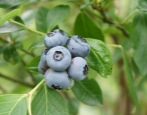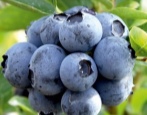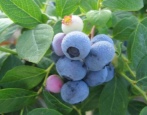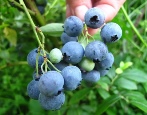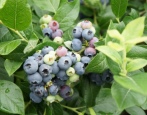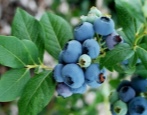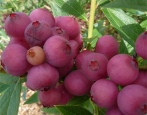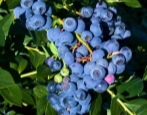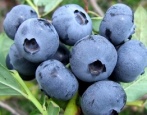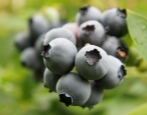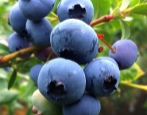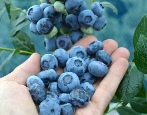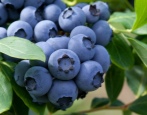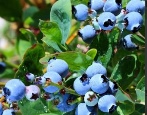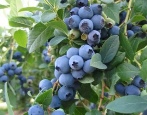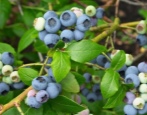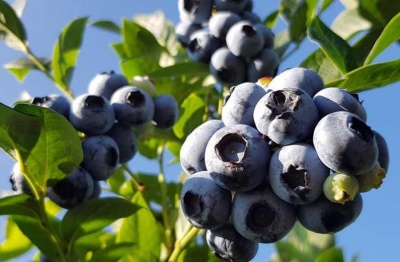
- Authors: America
- Ripening terms: mid-late
- Growth type: tall
- Bush height, m: 1,6
- Taste: sweet
- Yield: good
- Average yield: 5 kg per bush
- Fruit size: very large
- Fruit shape: rounded
- Fruit color: light blue
In Russia, blueberries are rarely grown on an industrial scale. It is unpretentious to care for, so many gardeners use the culture for decorative purposes. Blueberry Bonus is in great demand. The variety has all the necessary useful qualities, and also has a good yield.
Breeding history
The culture was bred in America at the University of Michigan. One of the parents of blueberries is considered to be a wild deciduous shrub Vaccinium tall. It grows in parts of North America and Canada. There is no exact date of the appearance of the Bonus blueberry, as well as information about when exactly the culture was brought to Russia.
Description of the variety
Blueberry Bonus is a tall shrub. The height of the bush reaches 1.6-1.8 m, small shrubs grow 1.2-1.4 m. The crown is raised, spreading, in girth it is 1.25-1.3 m, open in type. Adult shoots are strong, hard and lignified, 2-4 cm in diameter, brown in color. The peculiarity of the culture is that the oldest branches die off and break easily, giving way to new ones. If you thin out the branches in time, then young shoots will begin to develop 2 times faster, and the growth rate will increase.
Leaves are smooth, elliptical in shape, petioles are short. In the fall, the leaves begin to turn red, in the summer they are rich green.
Buds are elongated, in a chaotic manner are formed along the entire length of the shoot. Each flower bud produces an average of 5 to 10 buds per cluster. Peduncles are white or with a slight pink bloom, in shape they resemble bells.
The root system is well developed, it is ramified and deepens not only deep into the ground, but also sideways.
Fruit characteristics
Blueberry fruits are large. The diameter of one berry varies from 25 to 30 mm. Fruit weight 4-5 g. Such indicators are achieved only with proper care and stable feeding. Bushes that are neglected or wild are often shallower and yields drop.
All berries are collected in tight clusters and planted very close to each other. They do not crumble, as they are well attached to the stalk.
The color of the fruits is light blue with a slight whitish bloom. The skin is firm and elastic. Thanks to these properties, the variety has high indicators of transportability and keeping quality. Harvested berries do not lose their properties and presentation, stored in a cool dark place for up to 2 weeks.
The pulp is juicy and fleshy, greenish, with medium-sized seeds.
The culture belongs to the universal varieties, so the berries are consumed not only fresh, but also used for making jams, preserves, preserves and frozen.
Taste qualities
Almost all blueberry varieties have a pleasant and fresh taste. It is not as pronounced as in other cultures, but it has a pleasant aftertaste.
Ripening and fruiting
Blueberry Bonus is a mid-late variety. Fruits ripen at the end of July, and active fruiting occurs in the first half of August.
The active period of yield begins in blueberries 4-5 years after planting in the ground.
Yield
On average, 5 kg of berries are removed from one bush. With proper care and adherence to all agrotechnical points, the yield can increase to 8-9 kg.
Self-fertility and the need for pollinators
Blueberry Bonus is a self-fertile crop, so no additional pollination is required. But planting other varieties of blueberries has a good effect on the yield and size of the berries.
If you choose an additional crop for pollination, then Bluegold blueberries will do. She has the same flowering and fruit ripening times.
Growing and care
Seedlings must be purchased in special nurseries. But you should be prepared for the fact that the cost of the plant will be quite high.
The choice of location must be approached wisely. Blueberries love areas that are well lit by the sun and ventilated, but there are no drafts. Sour and light soil is chosen for blueberries. If possible, peat and sand should be present in the soil. If these components are not present, then when preparing the pit, they can be added to the soil. On heavy loams, the culture does not behave well, it often gets sick, and the yield does not give good results.
You can plant seedlings in spring or autumn. Many summer residents prefer the second option, since all the forces of the bush will go to the formation of a good root system, and not to a set of color and ripening of the buds. The main thing is that at the time of planting, all sap flow is reduced, then the culture will take root.
A 1x1 m hole is made in the selected area. This is necessary, since the culture is tall. If several varieties are planted, then it is best to plant them using the trench method. The depth in this case will be 60 cm, the distance between the bushes is 80 cm, and between the rows - from 3 m.It is best to make drainage at the bottom, since the roots go down 60-80 cm and in dry weather they can independently search for moisture. If there is an excess of water, the roots will begin to rot.
The excavated soil is mixed with fertilizers, sand and peat are added. The seedling must be tied to a small peg.
After planting, the bush is spilled with water and the earth around is mulched. For this variety, it is not recommended to use fresh sawdust as mulch, since when wet they completely block the supply of nitrogen, and this can cause starvation in the plant. Nitrogen is responsible for the collection of greens.
Subsequent care of the culture includes the following stages.
Regular watering. Blueberries do not like severe drought, but neither does too wet soil. Therefore, it is best to schedule and follow an irrigation schedule. Due to weather conditions, adjustments can be made to this procedure. One bush has 1-2 buckets of water. If the soil is slightly acidic, one bucket should be with acidified water. In hot weather, you can spray the crop with cold water.
Top dressing is applied under the bushes 3 times per season. At the beginning of the growing season, at the time of bud set and after harvest. In the spring, nitrogen and ammonium nitrate are introduced. These substances stimulate growth and color development. Then the bush needs phosphorus, as well as superphosphate. After the berries appear, nitrogen is removed from the fertilizer and calcium is added. In the fall, the bush is fertilized with potassium sulfate. Do not feed your blueberries with organic matter (manure or compost). This has a very detrimental effect on the root system, which cannot "digest" the feeding.
Loosening of the soil and removal of weeds are carried out after watering. But it is worth carrying out the procedure very carefully, since some of the roots are close to the surface of the earth. Therefore, it is worth loosening only 3 cm deep.
The formation and pruning of the crown is carried out by gardeners for 4 years after planting. The procedure is done in late autumn, as soon as the leaves fall. And in the spring - until the buds swell. First, shoots are removed that have begun to grow inside the bush. Then those that began to creep along the ground or formed at an angle. Only the strongest shoots should be left, which have reached a height of 0.5 m.At the 6th year, rejuvenating pruning is carried out. All old branches are removed.

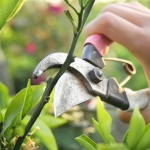
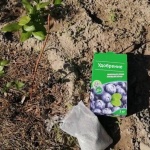
Disease and pest resistance
The variety has good immunity, but for preventive purposes it is best to spray the plant with fungicides.
